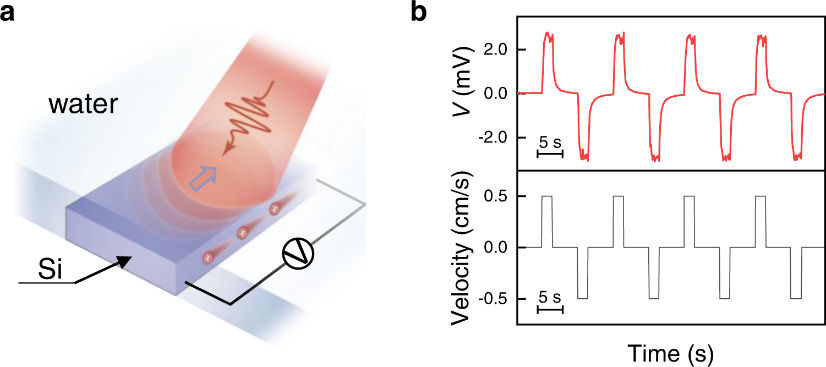Jidong Li, Yuyang Long, Zhili Hu, Jiyuan Niu, Tiezhu Xu, Maolin Yu, Baowen Li, Xuemei Li, Jianxin Zhou, Yanpeng Liu, Cheng Wang, Laifa Shen, Wanlin Guo, Jun Yin
Nature Communications ,12(1), pp. 1-6, 2021
Abstract:
External photo-stimuli on heterojunctions commonly induce an electric potential gradient across the interface therein, such as photovoltaic effect, giving rise to various present-day technical devices. In contrast, in-plane potential gradient along the interface has been rarely observed. Here we show that scanning a light beam can induce a persistent in-plane photoelectric voltage along, instead of across, silicon-water interfaces. It is attributed to the following movement of a charge packet in the vicinity of the silicon surface, whose formation is driven by the light-induced potential change across the capacitive interface and a high permittivity of water with large polarity. Other polar liquids and hydrogel on silicon also allow the generation of the in-plane photovoltage, which is, however, negligible for nonpolar liquids. Based on the finding, a portable silicon-hydrogel array has been constructed for detecting the shadow path of a moving Cubaris. Our study opens a window for silicon-based photoelectronics through introducing semiconductor-water interfaces.

Link: www.nature.com/articles/s41467-021-25318-8